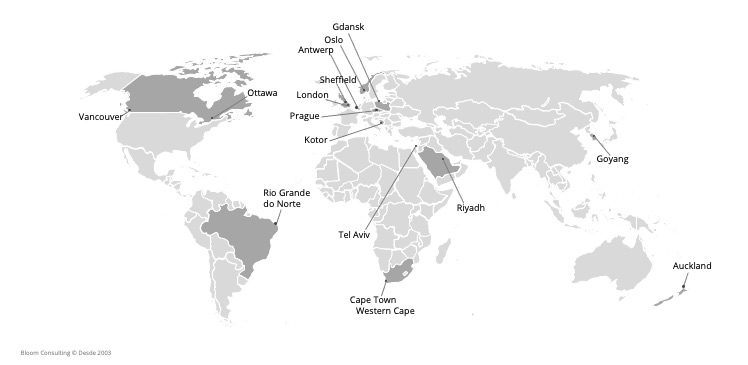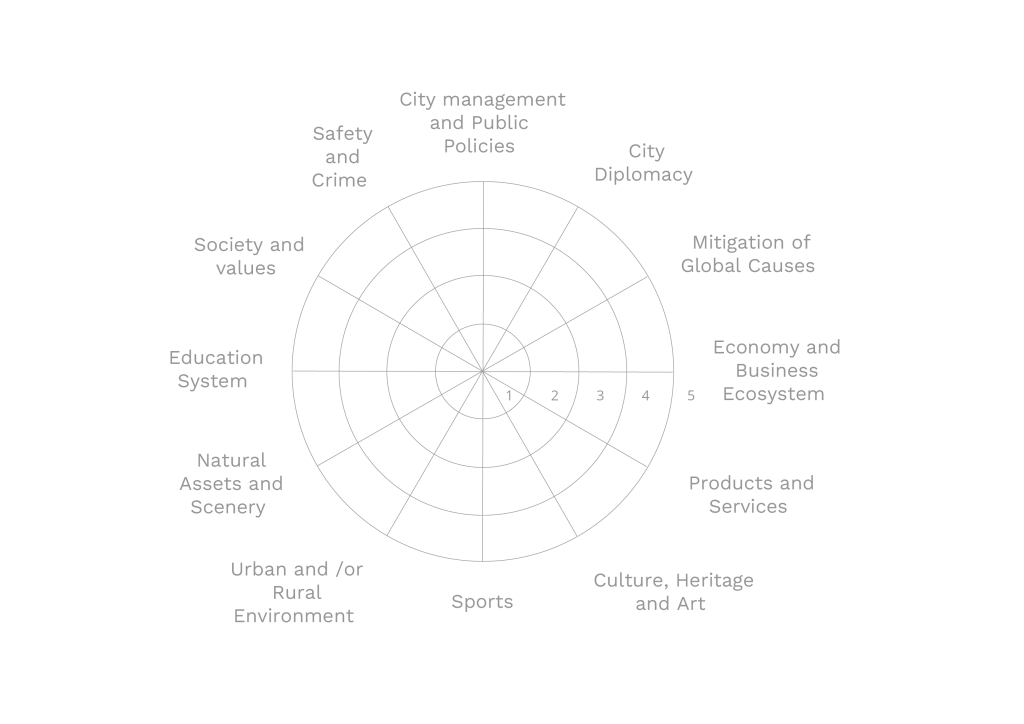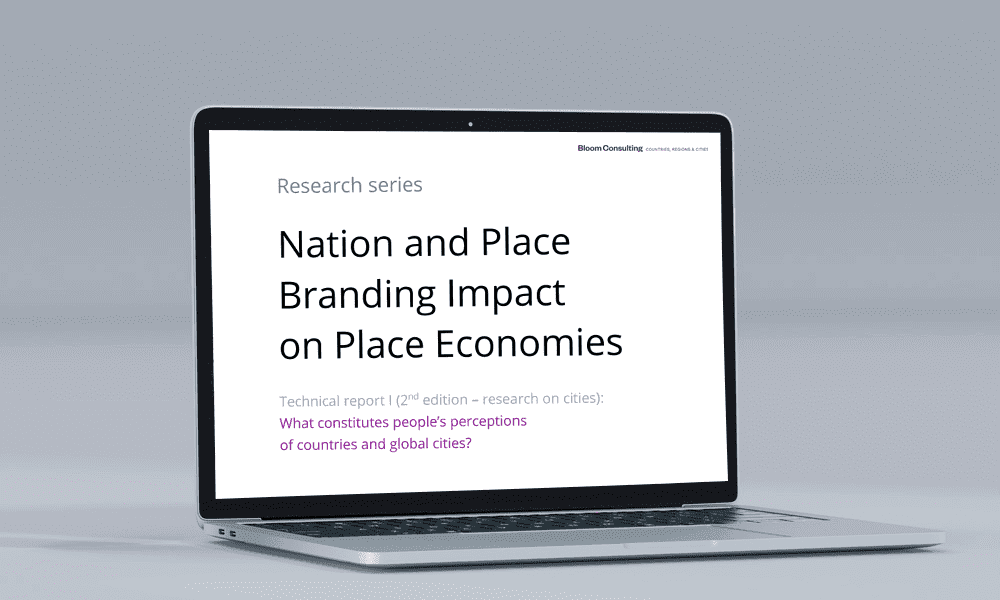“Nation and Place Branding Impact on Place Economies”, the study by Bloom Consulting, has embarked on a promising journey and is now advancing into its second phase. The outcome of the first part of the study (represented by Round 1 and Round 2), which resulted in the Nation Brand Taxonomy Model ©, indicated that the Perception Elements it established may not fully apply to City Brands. This called for adjustments to address the specifics of cities. The initial taxonomy was re-evaluated and adapted in Round 3 of the study to the context deemed relevant for regions and cities. The City Brand Taxonomy Model © was born.
To carry out the research, Bloom Consulting worked with:
- Welphi, a research company specializing in the Delphi method, which provided technical support;
- City Nation Place as partners in recruiting experts for the sample group;
- an Academic Advisory Board composed of José Fernández-Cavia (Universitat Pompeu Fabra), Sara Vinyals-Mirabent (Universitat Autònoma de Barcelona) and Valeriano Piñeiro-Naval (Universidad de Salamanca) for scientific supervision;
- the insights of 17 City, Destination and Place Brand managers from two regions and 14 cities around the world

Place Branding is the systematic and coherent management of perceptions surrounding a country, nation or city that is inherent in political and social domains. In other words, Nation, Place and City Branding pursue not only economic goals but also offer governance tools for developing territories through social, cultural and environmental policies.
Challenge
While branding as an instrument has become almost a must-have within territory development and governance agendas, conceptual debates about City and Place Branding continue to proliferate among academics and Place Brand professionals. Although there is no consensus on how to define City Branding and measure its impact, we live in a world where cities are being urged to find new ways to stand out and distinguish themselves in the global race for export, talent, investment and tourists. This new reality undeniably calls for a comprehensive measurement tool to help build resilient City and Place Brands, and guide policies and actions.
Thus, this study aims to contribute to the dialogue between City and Place Branding theory and practice, offering a tool for measuring the branding efforts guided by an interdisciplinary approach. The challenge was to deconstruct the good/bad binary approach to how cities and places are perceived, define the elements that constitute these perceptions, and how they can be managed in a way to facilitate export, tourism, talent and investment attraction.
This study will be useful for nation, region and city managers, governors and Place Brand professionals, while also contributing to theoretical debates with its distinctive methodology based on collaboration between academics, consultants and practitioners in City and Place Branding.
Objectives of the study
The study has three objectives:
- Define what constitutes perceptions.
- Understand how much positive perceptions of a place impact its economic or social performance.
- Discover potential correlations between the proactive efforts in managing Nation, Place or City Brands and the places’ economic performance.
The first report touches on the first objective – to define a taxonomy of perceptions.
12 Perception Elements that constitute one’s perception of a city
The first objective of the “Nation and Place Branding Impact on Place Economies” study — to define what constitutes people’s perceptions of countries and global cities — allowed establishing a framework for further research. Further reports will address the other objectives — measuring the weight of each Perception Element, and how positive perceptions of a nation or country impact its economic or social performance. The Perception Elements, evaluated by means of a five-level scale, serve as a guide to later define the actions and policies required to improve the general perception of a country, region or city.
The findings from the initial study, which introduced the Nation Brand Taxonomy Model ©, indicated the need for potential refinements in the Perception Elements associated with City Brands, considering their unique characteristics. As a result, the initial taxonomy was revised and tailored to better suit the nuances of cities and regions. This refined City Brand Taxonomy Model ©, emerging from the second part of the study, comprises a total of 12 Perception Elements.

Any region or city is welcome to use this model.
In the Technical report I (2nd edition: research on cities), you will learn about what constitutes people’s perceptions of cities. Download the report here: Nation and Place Branding Impact on Place Economies: What constitutes perceptions about countries and global cities?











